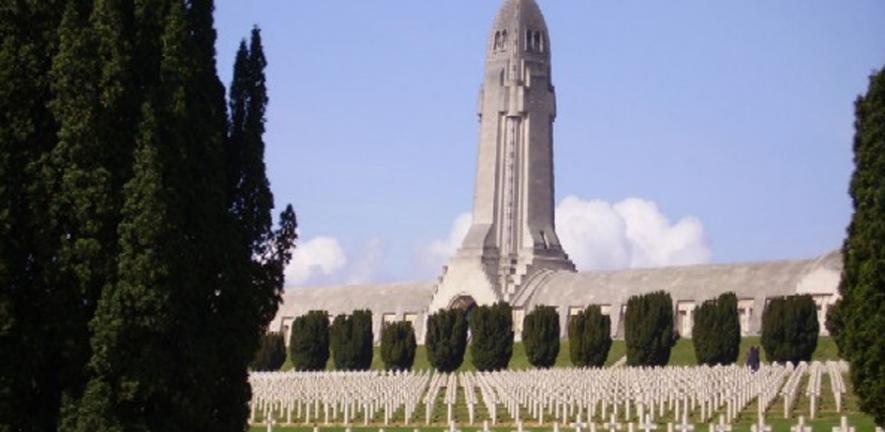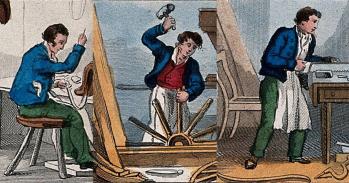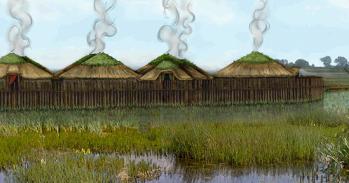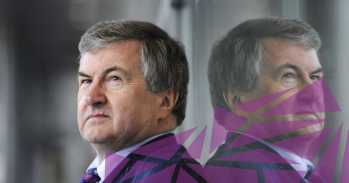
For the Festival of Ideas, Dr Dacia Viejo-Rose, a researcher on the CRIC research project, will discuss the unexpected impact and diverse use of memorials in societies recovering from war. Directed from the McDonald Institute for Archaeological Research, the CRIC project is investigating the reconstruction of cultural heritage after conflict in different areas of Europe.
For the Festival of Ideas, Dr Dacia Viejo-Rose, a researcher on the CRIC research project, will discuss the unexpected impact and diverse use of memorials in societies recovering from war. Directed from the McDonald Institute for Archaeological Research, the CRIC project is investigating the reconstruction of cultural heritage after conflict in different areas of Europe.
Memorials are far more complicated than any granite monument might suggest.
Dacia Viejo-Rose
As Armistice Day approaches, it is an appropriate time to consider how we choose to remember the past and what influence memorialisation can have on the way a society moves forward from trauma and loss. When memorials become part of our surrounding landscapes and anniversaries are included in annual routines, it is easily assumed that memorials are unchanging. So what roles can memorials play, how do they remain relevant and therefore important?
Over the last four years, research for the CRIC project has focused on the wide ranging forms of memorial activities, how each is linked with distinct intentions and claims. Our case studies in Spain, Germany, France and Denmark have identified the influential role of memorials and commemorations even decades after the events they were constructed to remember. We have learned that memorials evolve over time to suit new social and political needs.
So do memorials matter? Well yes, but not always in the ways we assume.
A main question is the role of memorials in post-conflict reconciliation: do memorials foster reconciliation or do they prolong divisions and resentment? The answer that has emerged from our case studies is that memorials are not primarily about reconciliation although, after time they can be used for that purpose. Two examples from the CRIC project show us what this means.
First, we turn to the First World War and to the battle of Verdun in France, a battle which lasted 10 months and saw a total of more than 300,000 battlefield deaths with casualties comparably shared out between the French and German camps. The long drawn out deadliness of this battle, in which the front line barely moved, became synonymous with the horror of modern warfare and so presented a significant memorial challenge once the war ended in 1918. A landscape shredded by blasts, trenches and barbed wire, still heaving with unexploded shells and the unrecovered bodies of soldiers, was seen by war veterans as the only possible memorial to the suffering. Yet, even after the first year of the war the terrain had begun to come to life as flowering plants and animals moved in. And so at the site of the Douaumont fort a memorial site was built with a cemetery and ossuary.
In the immediate post-war years this memorial site was one that expressed national grief over the destruction of the war and mourning over the thousands of lives lost. The motor for its construction was sorrow rather than an attempt to reach out to Germany even if there was recognition on the part of veterans that both French and German ‘common men’ had suffered at the hands of the politicians and officers that waged the war.
It was on 22 September 1984, 70 years after the start of the war that the memory of Verdun and the memorial site of Douaumont became firmly associated with a reconciliatory symbolism when French President Francois Mitterrand and German Chancellor Helmut Kohl stood in front of the ossuary and a coffin draped with both the French and German flags, and having listened to the German anthem, held hands as the Marseillaise played. For 70 years Verdun had been a landmark in the French historical landscape as a symbol of heroism, martyrdom, sacrifice, until that memorial gesture in 1984 converted it into a symbol of European reconciliation. As we approach the year 2014, the centennial anniversary of the war at which very few living witnesses of the battles will be present, the last poilu died in 2008, it remains to be seen what new symbolism will be attached to Verdun and it memorial spaces.
Second we look at the city of Dresden, the capital of Saxony replete with baroque and rococo architecture, which on 13 February 1945 suffered such a severe aerial bombing campaign by the Allied forces that a fire storm resulted wiping out the city centre and thousands of its inhabitants. When the Second World War ended Dresden found itself on the eastern side of a new barrier as the Iron Curtain was drawn along the front lines of the Cold War. As the horrors of Nazi extermination campaigns came to light and with the Nuremburg trials assigning culpability for Nazi crimes against humanity, there was very little space left for mourning over the death and destruction experienced by Germans. How could the destruction of Dresden be memorialised within a framework of German guilt?
It is this question that the city and its citizens have been struggling with and the struggle has gradually become an open conflict as on every February 13th various extremes political groups clash in Dresden. In between the two extremes, in greater numbers but not shouting as loudly, there is a large peace movement which invites a delegation from Coventry to take part in the commemorations and uses the occasion to form a human chain around the old part of the city that was rebuilt. The peace movement has become more visible and more vocal since the fall of the Berlin Wall in 1989.
What these two brief stories of memorialisation show is that memorials are far more complicated than any granite monument might suggest. They are processes involving a constellation of meanings, symbols, emotions, memories and narratives. Memorials are not inherently about reconciliation but they can come to be used to communicate reconciliatory messages.
Yes, memorials matter, but it is our use of them that make them matter, for better or worse.
- CRIC will be presenting their research at a session at the Festival of Ideas called Do memorials matter? at the McDonald Institute for Archaeological Research from 2-5.30pm on 22 October.
This work is licensed under a Creative Commons Licence. If you use this content on your site please link back to this page.





